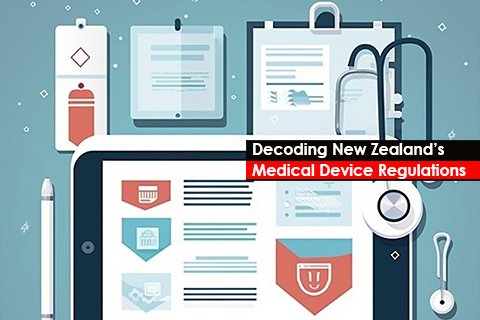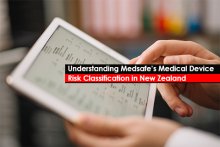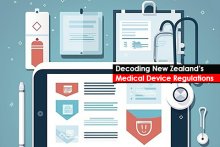The medical device Regulatory framework in New Zealand is built to ensure that medical devices sold in the country are safe and fit for their intended purposes. The Medicines Act, 1981 and its revisions, the Medicines Regulations, 1984, and the Medicines (Database of Medical Devices) Regulations, 2003 govern New Zealand’s medical device Regulatory system.
Medical devices must be reported to the Web Assisted Notification of Devices (WAND) database, which is managed under the Regulatory framework of the New Zealand Medicines and Medical Devices Safety Authority (Medsafe).
The WAND Database
The WAND database is a system established in New Zealand under the Medicines (Database of Medical Devices) Regulations, 2003, to collect information on all medical devices sold in the country. WAND is a statutory notification database that importers, exporters, and local manufacturers can use to notify the Director-General of Health about the medical devices they sell in New Zealand. However, WAND is not an approval mechanism and does not suggest that a medical device has been evaluated for quality, safety, efficacy, or performance by Medsafe.
The objective of the WAND database is to save information on medical devices to assist Medsafe in monitoring post-marketing activities and responding to safety risks. If a device has a safety issue, the WAND database is utilized to identify all the sponsors of that device. There are no fees for submitting information to the WAND database. Devices must be notified to the WAND database within thirty (30) calendar days of a person or organization becoming the sponsor of the device. Medsafe uses WAND information to guarantee that devices continue to meet the Regulatory standards.
Medical Device Classification in New Zealand
Medical devices are classified based on their risk, and the information required for notification includes the risk classification, contact information of the sponsor and manufacturer, and a product description using the Global Medical Device Nomenclature (GMDN) system.
The medical device’s risk classification can be determined using the computerized instructions on the New Zealand WAND Notification Form or by consulting the classification rules in Schedule 2 of the Medicines (Database of Medical Devices) Regulations, 2003. There are six (06) risk classes for medical devices and one (01) optional class for the notification of In Vitro Diagnostics (IVDs). The risk categorization to be included in the WAND database is the highest risk associated with the device’s planned use.
Critical Registration Requirements for Medical Devices in New Zealand:
Sponsors, who are responsible for medical devices in New Zealand, must ensure that the devices comply with the relevant legislation, they are safe, and that they are effectively labeled and advertised according to the New Zealand Medical Device Regulations. They also have post-marketing responsibilities, including reporting adverse events and initiating recalls, if necessary.
- Notification to WAND: All medical devices supplied in New Zealand must be notified to the WAND database unless they are exempted. When notifying a device to the WAND database, information such as the risk classification, manufacturer’s details, sponsor’s details, and product description based on the GMDN code must be provided. Notify the WAND database of your sponsorship within thirty (30) working days of becoming a sponsor. If there are any changes to the manufacturer’s/sponsor’s details or to the device, the sponsor must update the information in the database within ten (10) working days.
- Sponsorship: A resident New Zealand Sponsor or a New Zealand Sponsor Representative must be appointed for supplying medical devices in New Zealand. A sponsor is based in New Zealand and should also have a local presence, such as a registered business or a principal place of business in New Zealand.
- Compliance with Regulations: Medical device sponsors must comply with the Medicines Act, 1981, the Medicines Regulations, 1984, and the Medicines (Database of Medical Devices) Regulations, 2003.
- Labeling: Medical devices must be labeled in accordance with Regulation 12(4) of the Medicines Regulations, 1984, and the international best practices, including the name of the manufacturer or the manufacturer’s distributor in New Zealand. If a device is supplied for the purpose of a clinical trial, it must be clearly labeled as such.
- Quality Standards: Compliance with New Zealand or ISO standards, as well as adherence to Good Manufacturing Practice (GMP) requirements, are necessary.
- Post-marketing Surveillance (PMS): Sponsors must meet PMS obligations, including adverse event reporting and recall procedures. Sponsors shall maintain distribution records of the devices supplied so that in the event of a recall or corrective action the sponsor can contact all affected users.
- Safety and Efficacy: Devices must be safe and effective when used for their intended purposes and should meet all other legislative requirements.
- Additional Legislative Requirements for Medical Device Registration: Certain medical devices must comply with standards imposed by other statutes, such as:
- Electricity Act, 1992
- Contraception, Sterilization, and Abortion Act, 1977
- Hazardous Substances and New Organisms Act, 1996
- Radiation Protection Act, 1965
- Human Tissue Act, 2008
- Health (Needles and Syringes) Regulations, 1998
- Health and Safety in Employment (Pressure Equipment, Cranes, and Passenger Ropeways) Regulations, 1999
- Radiocommunications Act, 1989
- Regulatory Advice: For advice on product categorization under the New Zealand legislation, Medsafe requires a full description of the products, labeling, Instructions for Use (IFU), promotional materials, and associated website links.
- Section 56 of the Medicines Act, 1981: This section of the Medicines Act, 1981 contains crucial definitions for medical product advertising. Advertisement refers to any words, whether written, printed, or spoken, as well as any pictorial representation or design, used or appearing to be used to promote the sale of medicines, or medical devices, or the use of any method of treatment, including any trade circular, label, and advertisement in a trade journal. Sponsors must ensure that all their advertising complies with the applicable legislation, including the Fair Trading Act, 1986, the Commerce Act, 1986, and the Medicines Act, 1981.
It is important to note that while some medical devices may be exempt from notification, they are still regulated under the Medicines Act and must meet all other legislative requirements to ensure their safety and efficacy. Additionally, the Regulatory requirements in New Zealand may differ from those in other countries such as Australia; thus, even if a device is approved elsewhere, it must still be notified to WAND for its supply and sale in New Zealand. Overall, the New Zealand medical device system emphasizes the safety, quality, and performance of medical devices to protect public health.
Are you ready to take the next step in the New Zealand medical device registration process? Look no further. Freyr’s team of New Zealand medical device regulation experts are well-versed in providing comprehensive services tailored to meet your Regulatory needs. Contact Freyr today and let us be your dedicated partner in achieving successful medical device registration in New Zealand !





